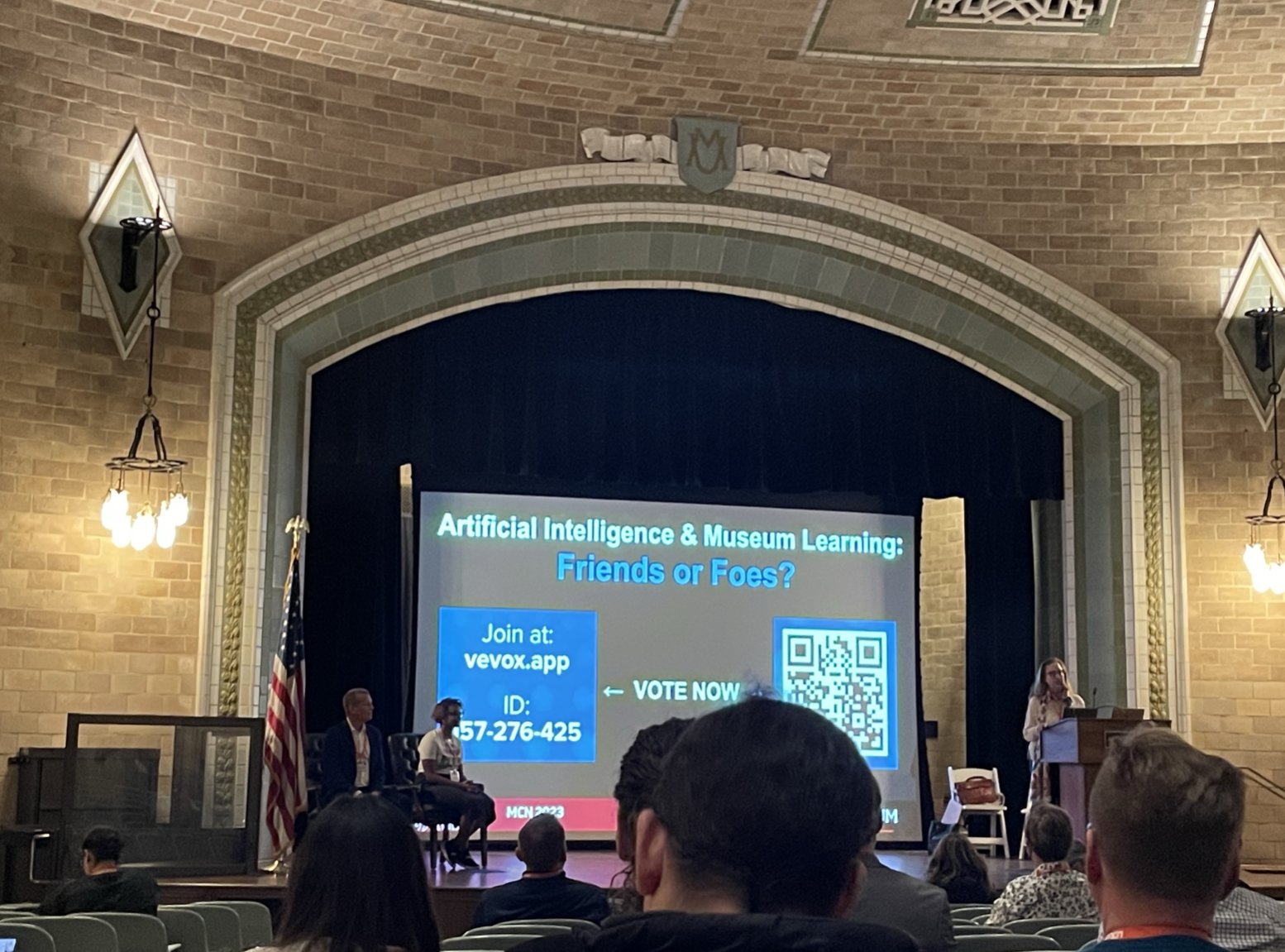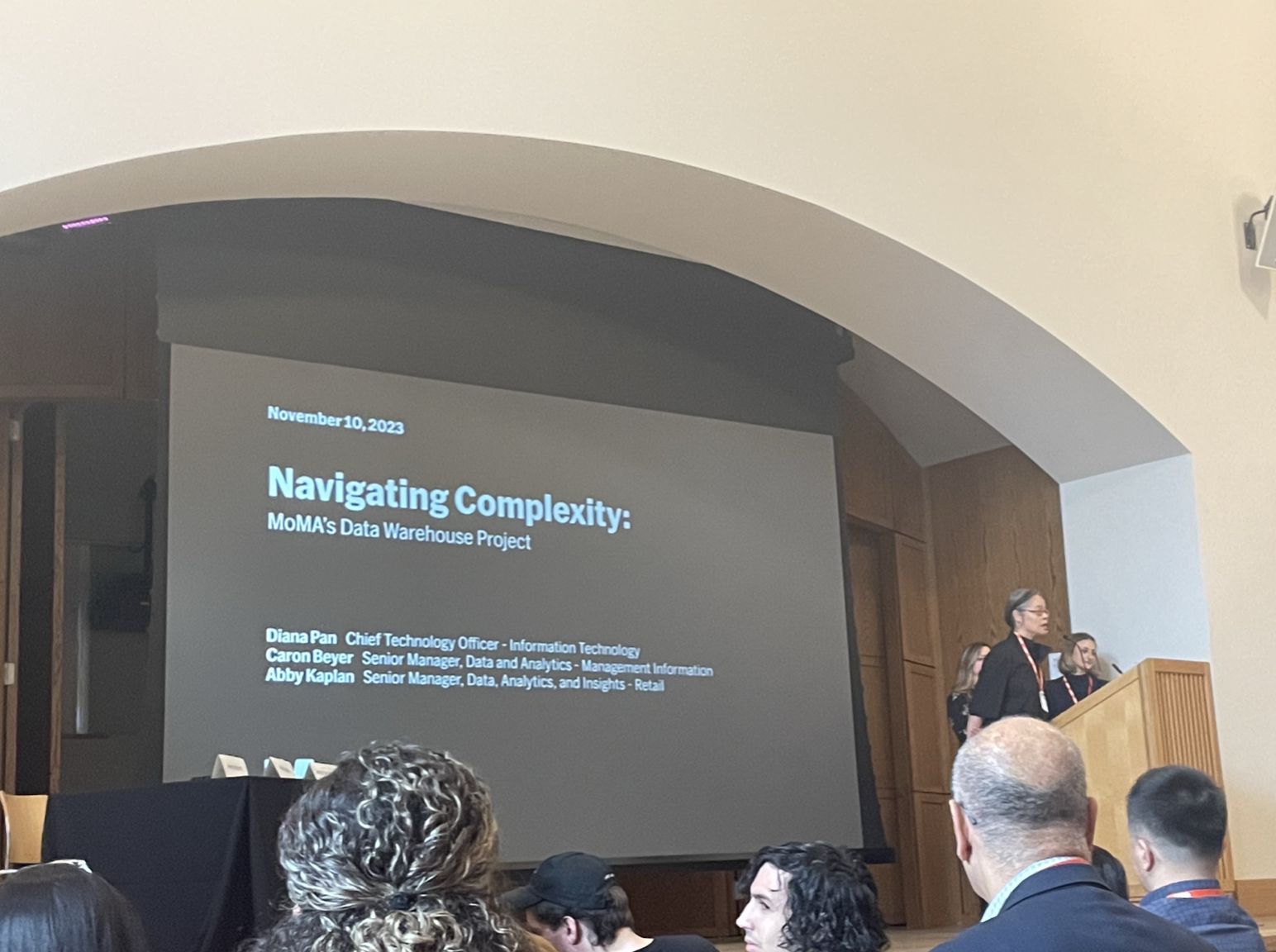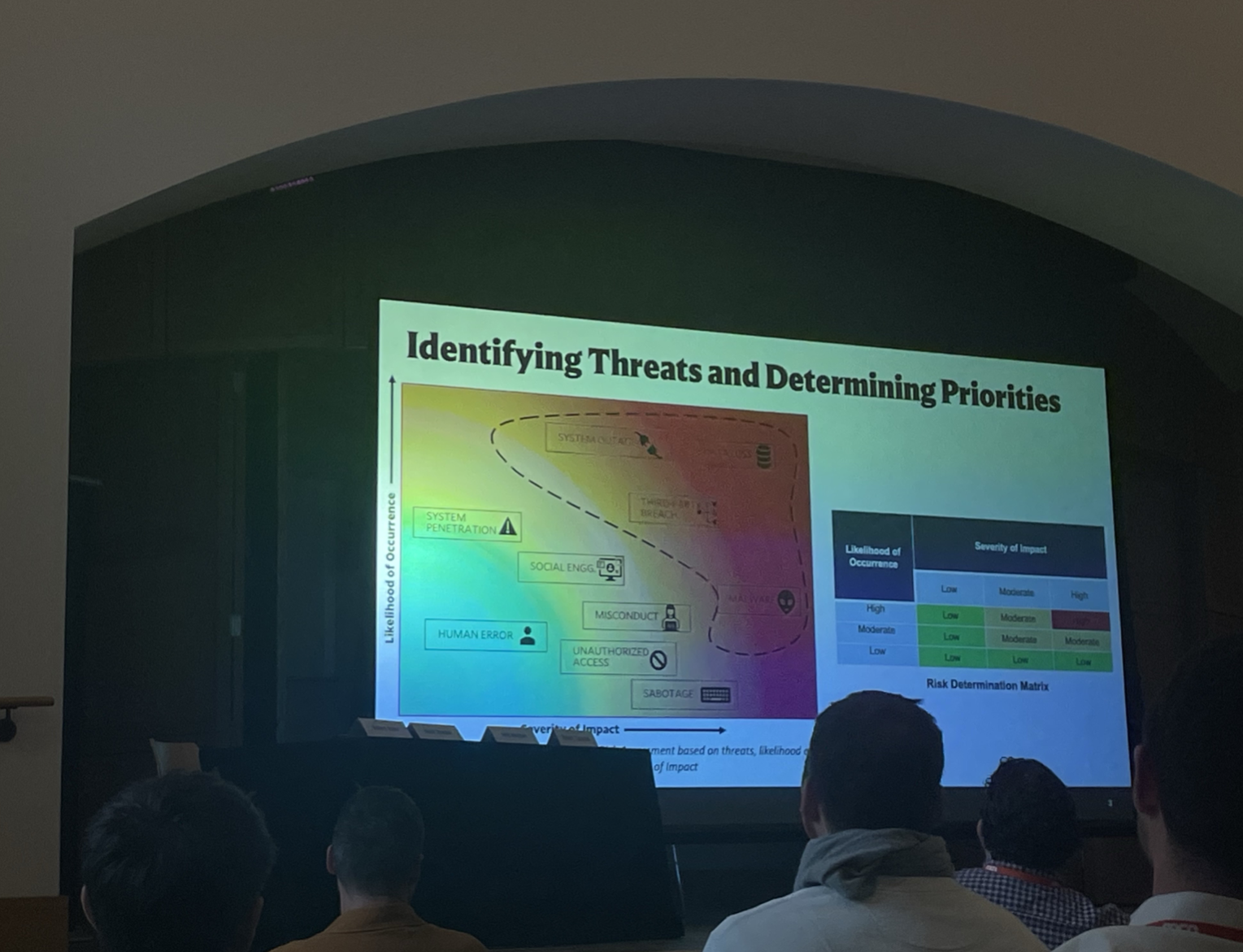By: Venetia Liao
Introduction
I attended the 2023 MCN—Museum Computer Network Conference with the goal of being inspired. I was thrilled that inspiration was just one of the many abundant takeaways from the conference.
Established in 1967, MCN’s goal has been to bridge museum professionals who are working in or interested in the use of technology for mutual discussion, stimulation, and support. Attendees consist of professionals in IT, digital outreach, visitor engagement, collections, conservation, archival, libraries, curatorial, education, marketing, and more. The nonprofit holds an annual conference that consists of presentations, share-outs of case studies takeaways, forums, open-space discussions, and networking sessions.
This is the first time MCN has been held in person since the pandemic. Though there was no specific written theme for this year’s conference, the abundant information and resources shared throughout the 3-day conference may be summed up in the following four topics written below.
Audience Engagement & Visitor Experience In Apps, Websites, Research, and Design
The National Gallery displayed its approach and reasoning behind developing and implementing UX research and design in its museum. Though the National Gallery is recognized for its scholarship opportunities and high-quality exhibitions, it has many pressing problems. One of the problems is the outdated digital strategy. According to the traffic monitor SimilarWeb, the museum had recorded 8.2 million visitors to its website in 2022. The number seems relatively small compared with other large-sized museums in the U.S., with The Metropolitan Museum of Art having 38.3 million visitors, The Museum of Modern Art having 27.7 million visitors, and The Getty Museum having recorded 14.7 million visitors via the web traffic monitor. The National Gallery thus developed a strategic goal of providing audience-focused experience both onsite and offsite in order to deliver meaningful and memorable experiences that would respond to their audience’s needs.
The National Gallery underwent the stages of development, education, UX tools definition, communication, and collaboration in order to reach the strategic goal. They defined their UX process as one that would ensure that the user’s needs are front and center and create a consistent acknowledgment of the need for research and user testing to be part of the design process. They tried to educate and communicate with staff members and stakeholders on the importance of UX by organizing book clubs, holding presentations, and creating detailed data + video examples, Figma prototypes, and mural boards. Regarding the development process, the UX team used web analytics, heat maps and scroll maps, tree testing, online surveys, in-person and remote user testing, recordings, A/B testing, card sorting, design software, wireframes, prototypes, and user flows.
Professor Antonella Poce from the Italian Institute for Applied Mathematics and Information Technologies (IMATI) – National Research Council (CNR) showcased her institute's work in partnering with different stakeholders and professionals in creating an app to derive tourist traffic and improve the tourism experience in Rome.
The Getty Museum also shared its emphasis on human emotion when structuring and designing its MoodJourney feature on the GettyGuide app. The app was built with the goal of building user engagement and had already provided interpretation and wayfinding for on-site visitors in the past. In 2024 Spring, they launched the MoodJourney feature which would allow audiences to select a “mood” they wished to experience at the museum, to which the app would provide pathways and suggestions information fitting to the user’s specific aspirations, that the visitor be placed in the center of the museum experience. Interesting data would also be able to be acquired due to the MoodJourney feature. For example, they would discover that the “creative and inspired” mood would be the most popular mood in October 2024, how the app would appeal most to the Getty’s repeated visitors, and how only 50% of the users would listen to onboarding audio for more than one minute.
The Met Museum, The National Gallery of Art, The Georgia O’Keeffe Museum, and The Pérez Art Museum Miami also shared their project management process and takeaways in transforming their websites and how differing user-inclusion methods and technological tools became leveraged into their new websites.
Image: UX Research and Design Process, MCN 2023, presentation by the team at The National Gallery of Art
Image Source: Venetia Liao
AI, VR/XR/AR Usage & Concerns
Dr. Synatra Smith, a black experience researcher, shared her case study of using XR to promote black public art in the Philadelphia region, and how the use of AI helped achieve her goals of documenting the qualitative voices of black audiences when engaging in a tight budget. AI voice-to-text platforms such as Otter.ai would save her much time in documenting the interviews of participants. However, several platforms were more prone to misunderstanding the words and speaking styles of the demographic she interviewed. Nevertheless, as AI had the ability to learn, she realized that she could become a part of training the AI systems to understand the demographic’s speaking style and choice of words. As much as she would have enjoyed hiring voice actors, the voiceovers made by AI made her research more permittable when engaging in a tight budget.
Members of the audience and Aaron Straup Cope from the SFO Museum expressed doubts and concerns about dominating tech companies accessing and controlling data access, training, and privacy when it came to AI systems and VR headsets. “The tech companies may be extracting the data for ways we do not intend the data to be used at all”, stated Mr. Cope.
The Cleveland Museum of Art shared how AI was incorporated when creating its new website (set to air in December). The team first looked back at the historical data of their web flows and migrated all the data from U4 to BigQuery. They were mindful of engaging in the incorporation of inclusive thinking into the initial development of the formation of the new website by holding workings led by Annie Jean-Baptiste (head of product inclusion at Google), which would help educate the staff members of differing departments. Cross-departmental teams discussed how to make the site welcoming and equitable for all and understood the needs of every department, and every department’s voices were documented and heard to understand the different needs and desires for the new website. Technical systems such as Athena, ArtLens CMS, Tessitura, and Shopify were incorporated into the new website. A comprehensive RFP was sent to vendors and staff for feedback and education purposes. Workflows were created via TNEW, Drupal developers were specialized, and APIs were created with collection data analysts. One of the most interesting features added was ArtLens AI, for visitors would be able to upload their own pictures to the website, with the website matching back an image of a piece in the collection that would be most similar to or resonate with the visitor’s uploaded picture.
A live poll was made during the AI & Museum Learning—Friends or Foes forum, arriving at a result where around 70% of the audience members (MCN) attendees regarded AI as having an overall positive impact in the field of museums.
Image: AI & Museum Learning—Friends or Foes, MCN 2023, forum led by Deborah Howes, Dr. Synatra Smith, and Douglas Hegley
Image Source: Venetia Liao
Data & Database Management For Collections Management & Marketing Strategy
MoMA shared how they learned to experiment with the usage of member/customer data in their database to help increase sales for the museum’s store through their data warehouse project. Prior to the project, they had decentralized data repositories that would be complex and time-consuming to manage and analyze. The goal was to create centralized datasets to store, manage, and organize the data. Data was to be cleaned, and automation was to be derived to shorten the manual effort needed. Software and toolkits such as the Google Cloud Platform, Big Query, and Lookerstudio were used during the process. Daily performance emails could then be automated, and drillable data expressing granular data could then be updated and presented on a daily basis.
Vendors including Quire, Collector Systems, and Zetcom promoted the software systems they could provide in tracking archives, catalogs, inventory, and donor/member information.
I especially enjoyed Jeremy Munro’s (database administrator for the Smithsonian National Air and Space Museum) remarks on how big data is transforming the way humans think, and why we should dig into the deeper questions of data, instead of just drifting on the mere emphasis and pursuit of optimization. We are relying more on computational thinking, but we should remember that computational thinking does have its limits.
Image: Navigating Complexity—MoMA’s Data Warehouse Project, MCN 2023, share-out led by the team at MoMA
Image Source: Venetia Liao
Cybersecurity
Cybersecurity professionals from consulting firms and The National Gallery of Art emphasized the importance of cybersecurity in the age we are in and expressed tips on how to manage cybersecurity, including the careful choice of passwords, building multi-factor authentication, and setting up anti-phishing training for staff members. Scams are inevitable and will become more prevalent, thus cybersecurity should not be ignored.
The National Gallery of Art shared its vulnerability management system for managing cybersecurity. The Information Security Team scans all devices weekly to detect these vulnerabilities and is charged with patching and remediating identified vulnerabilities within a defined time period. The key considerations are to ensure good inventory (i.e., servers, workstations, network devices, IOT, etc.), ensure scanners can reach all devices within your organizational IT environment, configure scanning policy appropriately, Identify systems that do not respond to vulnerability scanning, and ensure that the organization has valid scanning credentials for each node/device on the network.
Image: Identifying Threats and Determining Priorities, MCN 2023, share-out let by the team at The National Gallery of Art
Image Source: Venetia Liao
Conclusions & Final Thoughts
It is hard to sum up the breadth of thoughts and information that had been exchanged and shared through the MCN conference this year. Lectures and discussions would take place parallelly, and brilliant information was buzzed and exchanged vastly and dynamically. However, to sum it all up, the 2023 MCN Conference showcased the extraordinary technology that is being used amongst institutions of differing sizes, scales, and budgets. It also emphasized how institutions are finding common ground to design and fit the technology in ways that could speak to and benefit both the visitors/audiences and internal departments. Additionally, both acknowledgment and concern were expressed regarding the rapidly moving technology trends and systems.
There are two discussions I found especially stimulating and valuable. A digital interactives professional expressed in an evening reception how the rapidness of technology is ceasing the feeling of excitement and awe technology brings. When the sense of awe and magic is no longer provided, that is when the technology may lose its value or drive in the museum space or even anywhere else. So how museum professionals are able to keep up and make selections is indeed a challenge, yet it is also an opportunity. A database collections professional also pointed out how museum professionals have been undergoing research for decades. The research has resulted in the creation of amazing archives and data recordings that are different from the errors and misinformation that AI systems have. This may be what sets museums apart and becomes a great value and opportunity for museums.
Image: Opening of MCN 2023 at Penn Museum
Image Source: Venetia Liao
-
https://mcn.edu/annual-conference/mcn-2023/
https://www.similarweb.com/website/nga.gov/competitors/
https://tethys.pnnl.gov/organization/national-research-council-national-academies-nrc
https://www.getty.edu/visit/app/
https://storymaps.arcgis.com/stories/6f9c9f75c9af4d0a9687fc342cea01d2
https://www.clevelandart.org/artlens-gallery/artlens-app
https://www.tessituranetwork.com
https://cloud.google.com/looker-studio






